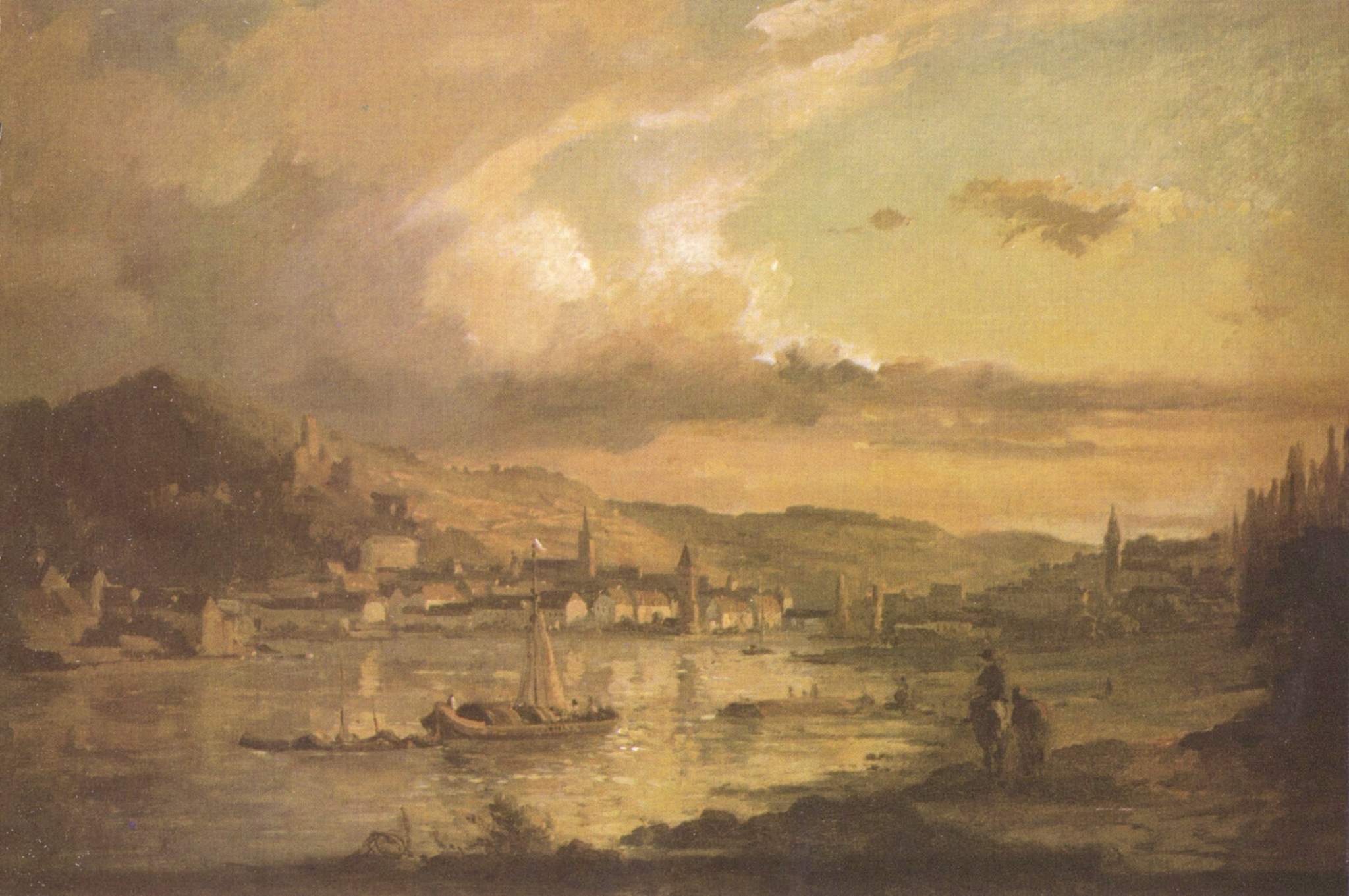|
Kreuzwertheim
Kreuzwertheim () is a market town in the Main-Spessart district in the ''Regierungsbezirk'' of Lower Franconia (''Unterfranken'') in Bavaria, Germany and the seat of the ''Verwaltungsgemeinschaft'' (municipal association) of Kreuzwertheim. It has around 3,800 inhabitants. Geography Location The municipality lies on the right bank of the river Main on the edge of the Spessart, across the river from the town of Wertheim in Baden-Württemberg. Constituent communities Kreuzwertheim's ''Ortsteile'' are (with year of amalgamation and rough population figures): * Kreuzwertheim, 2,844 * Unterwittbach, 1977, 207 * Wiebelbach, 1972, 201 * Röttbach, 1978, 569 The municipality has the following ''Gemarkungen'' (traditional rural cadastral areas): Kreuzwertheim, Röttbach, Unterwittbach, Wiebelbach. History Prehistoric As witnessed by finds of stone hatchets, human settlement in the municipal area goes as far back as the Stone Age. The first known description of the settleme ... [...More Info...] [...Related Items...] OR: [Wikipedia] [Google] [Baidu] |
Wertheim Am Main
Wertheim (East Franconian: ''Wärde'') is a town in southwestern Germany, in the state of Baden-Württemberg with a population of around 23,400. It is located on the confluence of the rivers Tauber and Main. Wertheim is best known for its landmark castle and medieval town centre. Geography Wertheim is the most northerly town in the state of Baden-Württemberg. It is situated at the confluence of the rivers Tauber and Main, on the Main's left bank. It borders on the Odenwald hills and the Spessart range to the north across the river Main. Wertheim is located in the Main-Tauber district. Neighboring communities The following towns and communities border on Wertheim, listed clockwise starting in the east: Holzkirchen, Helmstadt and Neubrunn (all district Würzburg, Bavaria), Werbach and Külsheim (both Main-Tauber district), Neunkirchen ( district Miltenberg, Bavaria), Freudenberg (Main-Tauber district), Stadtprozelten and Faulbach (both Miltenberg district) and Hasloch, ... [...More Info...] [...Related Items...] OR: [Wikipedia] [Google] [Baidu] |
Löwenstein-Wertheim
Löwenstein-Wertheim was a county of the Holy Roman Empire, part of the Franconian Circle. It was formed from the counties of Löwenstein (based in the town of Löwenstein) and Wertheim (based in the town of Wertheim am Main) and from 1488 until 1806 ruled by the House of Löwenstein-Wertheim who are morganatic descendants (and the most senior line) of the Palatinate branch of the House of Wittelsbach. History The county of Löwenstein belonged to a branch of the family of the counts of Calw before 1281, when it was purchased by the German king Rudolph I of Habsburg, who presented it to his natural son Albert. In 1441 Henry, one of Albert's descendants, sold it to Frederick I, Count Palatine of the Rhine, head of the Palatine branch of the house of Wittelsbach, and later it served as a portion for Louis (1494-1524), a son of the elector by a morganatic marriage, who became a count of the Empire in 1494. Louis obtained Löwenstein in Swabia and received from Emperor Maximilian I ... [...More Info...] [...Related Items...] OR: [Wikipedia] [Google] [Baidu] |
Spessart
Spessart is a ''Mittelgebirge'', a range of low wooded mountains, in the States of Bavaria and Hesse in Germany. It is bordered by the Vogelsberg, Rhön and Odenwald. The highest elevation is the Geiersberg at 586 metres above sea level. Etymology The name is derived from "Spechtshardt". ''Specht'' is the German word for woodpecker and ''Hardt'' is an outdated word meaning "hilly forest". Geography Location The Spessart is a ''Mittelgebirge'', part of the German Central Uplands, located in the Lower Franconia region of Bavaria and in Hesse, Germany. It is bordered by other ranges of hills: the Vogelsberg in the north, Rhön in the northeast and Odenwald in the southwest. Another way of describing the extent of the range is by naming the rivers that border it: the Main in the south and west, the Kinzig in the north and the Sinn in the northeast. The area of the Spessart totals around 2,440 square kilometres, of which 1,710 square kilometres are part of Bavaria. The high ... [...More Info...] [...Related Items...] OR: [Wikipedia] [Google] [Baidu] |
Main-Spessart
Main-Spessart is a ''Landkreis'' (district) in the northwest of Bavaria, Germany. It is located in Lower Franconia and derives its name from the river Main and the wooded hills of the Spessart. Geography The district is bounded by (from the north and clockwise) the districts of Bad Kissingen, Schweinfurt and Würzburg, the state of Baden-Württemberg (district of Main-Tauber), the districts of Miltenberg and Aschaffenburg, and the state of Hesse (district of Main-Kinzig). The river Main forms a large horse-shoe bend in the district, entering in the southeast near Thüngersheim and leaving to the southwest near Hasloch. In the north it is joined by the Franconian Saale river at Gemünden. The Spessart hills cover most of the area of the district west and north of the Main. To the northeast, the district borders on the Rhön hills. History The district was established in 1972 by merging the former districts of Gemünden, Karlstadt, Lohr and Marktheidenfeld. Although Lohr is the ... [...More Info...] [...Related Items...] OR: [Wikipedia] [Google] [Baidu] |
German Mediatization
German mediatisation (; german: deutsche Mediatisierung) was the major territorial restructuring that took place between 1802 and 1814 in Germany and the surrounding region by means of the mass mediatisation and secularisation In sociology, secularization (or secularisation) is the transformation of a society from close identification with religious values and institutions toward non-religious values and secular institutions. The ''secularization thesis'' expresses the ... of a large number of Imperial Estates. Most Hochstift, ecclesiastical principalities, free imperial cities, secular principalities, and other minor self-ruling entities of the Holy Roman Empire lost their independent status and were absorbed into the remaining states. By the end of the mediatisation process, the number of German states had been reduced from almost 300 to just 39. In the strict sense of the word, mediatisation consists in the subsumption of an Imperial immediacy, immediate () state into anot ... [...More Info...] [...Related Items...] OR: [Wikipedia] [Google] [Baidu] |
Karl Theodor Anton Maria Von Dalberg
Karl Theodor Anton Maria von Dalberg (8 February 1744 – 10 February 1817) was Prince- Archbishop of Regensburg, Arch-Chancellor of the Holy Roman Empire, Bishop of Constance and Worms, prince-primate of the Confederation of the Rhine and Grand Duke of Frankfurt. Early life and career Born in Herrnsheim near Worms, Germany, as a member of Dalberg family, he was the son of Franz Heinrich von Dalberg (1716–1776), administrator of Worms, one of the chief counsellors of the Prince-elector and Archbishop of Mainz and his wife Baroness Maria Sophie Anna von Eltz-Kempenich (1722–1763). Karl devoted himself to the study of canon law, and entered the church. Having been appointed in 1772 governor of Erfurt, he won further advancement by his successful administration. In 1787 he was elected coadjutor cum iure successionis of the Archbishopric of Mainz and the Bishopric of Worms, and in 1788 of the Bishopric of Constance; at the same time, he became titular archbishop ... [...More Info...] [...Related Items...] OR: [Wikipedia] [Google] [Baidu] |
Principality Of Aschaffenburg
The Principality of Aschaffenburg (german: Fürstentum Aschaffenburg) was a principality of the Holy Roman Empire created in 1803 and, following the dissolution of the Empire in 1806, of the Confederation of the Rhine, which existed from 1806 to 1810. Its capital was Aschaffenburg. With the secularization of the Archbishopric of Mainz in 1803, Karl Theodor Anton Maria von Dalberg was compensated by receiving the newly created principalities of Aschaffenburg and Regensburg and the County of Wetzlar. Along with the city of Aschaffenburg, the Principality of Aschaffenburg also consisted of Klingenberg, Lohr, Aufenau, Stadtprozelten, Orb, and Aura. The principality became part of the Confederation of the Rhine in 1806 after the dissolution of the Holy Roman Empire. In 1810 Napoleon granted Dalberg's Principality of Regensburg to the Kingdom of Bavaria and compensated him with Hanau and Fulda. Dalberg merged his remaining territories of Aschaffenburg, Frankfurt, Wetzlar, Hanau, ... [...More Info...] [...Related Items...] OR: [Wikipedia] [Google] [Baidu] |
Grand Duchy Of Frankfurt
The Grand Duchy of Frankfurt was a German satellite state of Napoleonic creation. It came into existence in 1810 through the combination of the former territories of the Archbishopric of Mainz along with the Free City of Frankfurt itself. History Frankfurt lost its status as a free imperial city in 1806 with the dissolution of the Holy Roman Empire. The city was granted to the former archbishop of Mainz, Karl Theodor Anton Maria von Dalberg, and became the Principality of Frankfurt. When Dalberg was forced by Napoleon to relinquish his Principality of Regensburg to the Kingdom of Bavaria in 1810, his remaining territories of Aschaffenburg, Wetzlar, Fulda, Hanau, and Frankfurt were combined into the new Grand Duchy of Frankfurt. Although the grand duchy was named after Frankfurt, the city was administered by French commissioners while Dalberg resided in the city of Aschaffenburg. According to the constitution of the grand duchy, upon Dalberg's death, the state would be inherit ... [...More Info...] [...Related Items...] OR: [Wikipedia] [Google] [Baidu] |
Ortsteil
A village is a clustered human settlement or Residential community, community, larger than a hamlet (place), hamlet but smaller than a town (although the word is often used to describe both hamlets and smaller towns), with a population typically ranging from a few hundred to a few thousand. Though villages are often located in rural areas, the term urban village is also applied to certain urban neighborhoods. Villages are normally permanent, with fixed dwellings; however, transient villages can occur. Further, the dwellings of a village are fairly close to one another, not scattered broadly over the landscape, as a dispersed settlement. In the past, villages were a usual form of community for societies that practice subsistence agriculture, and also for some non-agricultural societies. In Great Britain, a hamlet earned the right to be called a village when it built a Church (building), church. [...More Info...] [...Related Items...] OR: [Wikipedia] [Google] [Baidu] |
Amt (country Subdivision)
Amt is a type of administrative division governing a group of municipalities, today only in Germany, but formerly also common in other countries of Northern Europe. Its size and functions differ by country and the term is roughly equivalent to a US township or county or English shire district. Current usage Germany Prevalence The ''Amt'' (plural: ''Ämter'') is unique to the German '' Bundesländer'' (federal states) of Schleswig-Holstein, Mecklenburg-Western Pomerania and Brandenburg. Other German states had this division in the past. Some states have similar administrative units called ''Samtgemeinde'' (Lower Saxony), ''Verbandsgemeinde'' (Rhineland-Palatinate) or ''Verwaltungsgemeinschaft'' (Baden-Württemberg, Bavaria, Saxony, Saxony-Anhalt, Thuringia). Definition An ''Amt'', as well as the other above-mentioned units, is subordinate to a ''Kreis'' (district) and is a collection of municipalities. The amt is lower than district-level government but higher than municipal ... [...More Info...] [...Related Items...] OR: [Wikipedia] [Google] [Baidu] |
Transport
Transport (in British English), or transportation (in American English), is the intentional movement of humans, animals, and goods from one location to another. Modes of transport include air, land (rail and road), water, cable, pipeline, and space. The field can be divided into infrastructure, vehicles, and operations. Transport enables human trade, which is essential for the development of civilizations. Transport infrastructure consists of both fixed installations, including roads, railways, airways, waterways, canals, and pipelines, and terminals such as airports, railway stations, bus stations, warehouses, trucking terminals, refueling depots (including fueling docks and fuel stations), and seaports. Terminals may be used both for interchange of passengers and cargo and for maintenance. Means of transport are any of the different kinds of transport facilities used to carry people or cargo. They may include vehicles, riding animals, and pack animals. Vehicles may incl ... [...More Info...] [...Related Items...] OR: [Wikipedia] [Google] [Baidu] |








